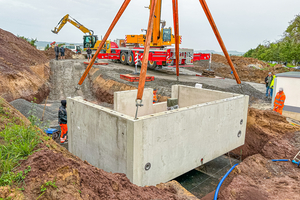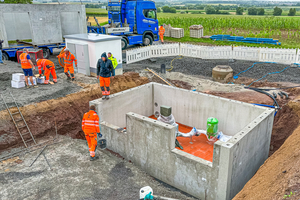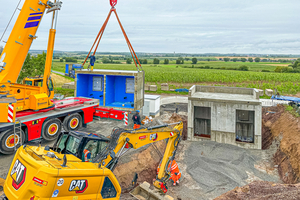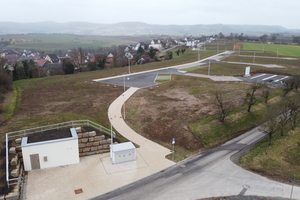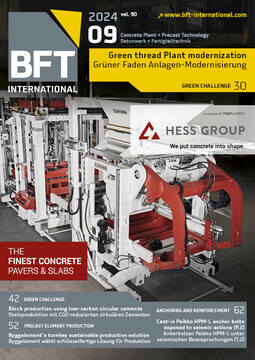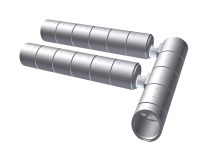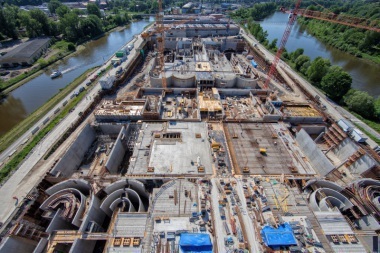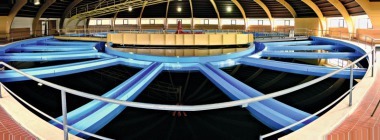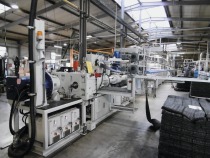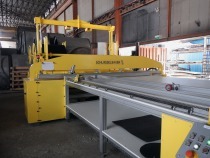Precast elements as drinking water reservoirs in Öhringen
Adherence to certain water pressure standards is critical for safe, convenient and efficient water supply in German cities. The requirements are established in the German Federal Water Act (WHG), and in other regulations. The times when water towers ensured the required pressure in water pipes by the force of gravity are over. Today, water suppliers and wastewater disposal companies, and the local waterworks, are responsible for maintaining water pressure in a city. These organizations monitor and regulate the water pressure in the supply network to ensure that the population is supplied with sufficient water pressure. When water consumption increases due to expansion of user areas, the water supplier must ensure that the water pressure always complies with requirements. During development of a new housing estate in Öhringen-Michelbach in the district of Hohenlohe in Germany, special requirements became evident due to the settlement’s exposed location at the edge of the municipality. These requirements were met by a pressure-boosting plant and two drinking water reservoirs made of precast reinforced-concrete elements.
On the new housing district above the small Swabian community of Michelbach am Wald, plots for 25 single-family homes and ten duplex units are planned, as well as plots for two multifamily houses and one row house. To be able to provide the required minimum flow pressure in the future intake points of the buildings planned in the Göckes high zone, the responsible parties planned to install a pressure booster (DEA) with connected drinking water reservoir. The pressure booster was initially planned to consist of two 10m PEHD DN 3,000 pipes. However, installation actually took place of two over-dimensioned precast concrete elements (approx. 6 x 8 x 5 m) from the Finger Beton company group, which – lined with PEHD – serve as a potable-water reservoir.
All six precast elements installed in only one day
Johannes Krist of the company Wolff & Müller Tief- und Strassenbau GmbH & Co. KG from Künzelsau explained the advantages of this construction method: “The great advantage of the precast solution was that everything was delivered by a single supplier. Everything fitted perfectly together, which, of course, also played a role in the watertight characteristics of the facility. Friction-locking simply provided the connection of the drinking water reservoirs to the DEA – clearly a better solution than would have been possible with PEHD pipes. The variation in settling properties of the material could also have caused problems. A crutch seal for the initially planned pipe solution would have been extremely complex to realize. The total of six precast elements that were installed here in one day could be flooded without difficulty on the same day,” explains Krist.
The two tanks of the drinking water reservoir are interconnected in order to prevent contamination of the facility and to ensure continuous mixing. Max Vielhaber of Aqua Pluvia KG from Stadtallendorf explains the functioning of the DEA: “The receiver tanks are fitted with a separate ventilation pipe, which is provided with an additional pipe ventilator. This prevents formation of condensation and pressure surges in the tanks. For drainage during maintenance and cleaning, one discharge pipe closed with shut-off valves has been installed at all points on the base of the structure. If the receiver tanks are overfilled, drinking water is discharged into the canal via an emergency spillway. To prevent contamination from the sewerage system, an odor trap was installed in each receiver tank. The odor trap is constantly filled with water and must be cleaned each month to prevent bacterial contamination. In addition, a flap trap was installed in the emergency discharge pipe to prevent backflow in the system. Three pumps in the DEA ensure constant water pressure in this system. A pressure sensor controls the pumps in case of a pressure drop in the drinking-water pipe. If the pressure drops excessively, the control unit can start up to three pumps in succession.
Delivery from a single source by Finger-Beton
The entire plant, consisting of six structures, was manufactured in the Stockstadt plant of the Finger-Beton company group. Steven Grimes, Sales Manager for Special Structures at Finger Baustoffwerk in Ludwigshafen, explained the special features of the plant: “Our project extended from connection of the PEHD-lined drinking water reservoir to the DEA, including complete outfitting of the DEA. Because we were involved in planning the project from the very start, we were able to develop a concept to deliver everything from a single source. Everything fits perfectly and also offers significant advantages in logistics and installation. The completely prefabricated concrete elements, weighing around 40 tons, were delivered to the construction site, placed in the excavation by mobile crane and friction-locked.
Some time will pass until the construction work at the Göckes site is completed. But one thing is already sure: if demand for water in German households suddenly increases – as it usually does during intermissions of major sports events – the population of Michelbach will be supplied with sufficient water.
CONTACT
Finger Baustoffe GmbH
Bellnhäuser Straße 1
35112 Fronhausen/Germany
+49 6426 9230-0

